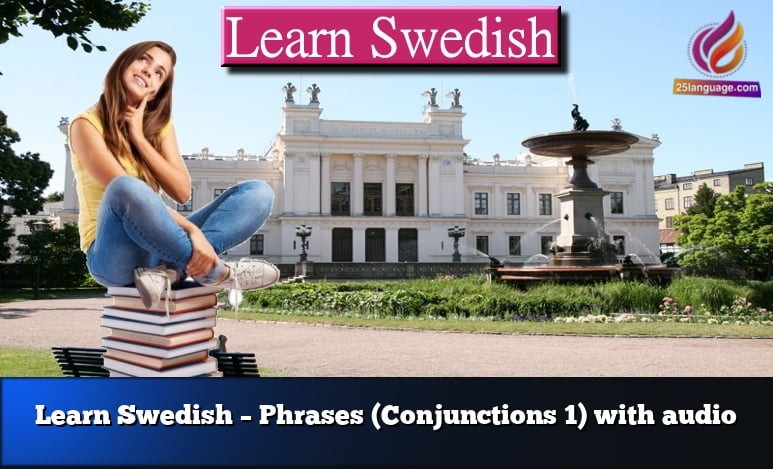Learn phrases (Past tense 1) in Swedish with audio
Learn phrases (Past tense 1)

😍😍Hi friends 👍👍Don't forget to listen to the pronunciation 😊Learn Swedish easily😊
In Swedish, the past tense is used to talk about actions or events that have already happened in the past. The past tense is formed differently for regular and irregular verbs.
- Regular Verbs:
- For regular verbs, the past tense is formed by adding the suffix “-de” or “-te” to the verb stem, depending on the verb’s ending. The choice between “-de” and “-te” depends on the verb’s conjugation class.
- Here are some examples:
- Infinitive: “spela” (to play)
- Jag spelade fotboll igår. (I played soccer yesterday.)
- Infinitive: “läsa” (to read)
- Hon läste en bok förra veckan. (She read a book last week.)
- Infinitive: “gå” (to walk)
- Vi gick på en lång promenad i parken. (We went for a long walk in the park.)
- Infinitive: “spela” (to play)
- Irregular Verbs:
- Irregular verbs have a different past tense form that needs to be learned individually as they don’t follow a specific pattern.
- Here are some examples:
- Infinitive: “vara” (to be)
- Jag var på stranden igår. (I was at the beach yesterday.)
- Infinitive: “göra” (to do)
- Han gjorde ett bra jobb. (He did a good job.)
- Infinitive: “säga” (to say)
- Hon sa att hon skulle komma imorgon. (She said she would come tomorrow.)
- Infinitive: “vara” (to be)
-
Supine:
- The supine form is used with some verbs, including modal verbs and the verbs “ha” (to have) and “vara” (to be), to indicate a completed action or event.
- Here are some examples:
- Infinitive: “äta” (to eat)
- Jag har redan ätit middag. (I have already eaten dinner.)
- Infinitive: “gå” (to go)
- Vi hade gått hem när regnet började. (We had gone home when it started raining.)
- Infinitive: “se” (to see)
- Han hade sett filmen tidigare. (He had seen the movie before.)
- Infinitive: “äta” (to eat)
It’s important to note that Swedish has a variety of irregular verbs, so it’s useful to familiarize yourself with their past tense forms through practice and exposure.
Remember, word order in a Swedish sentence remains the same in the past tense as in the present tense, with the subject typically preceding the verb.
I hope this lesson helps you understand the past tense in Swedish! Let me know if you have any further questions .





























